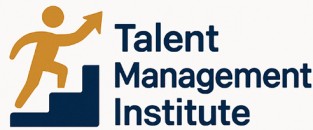
Understanding the Importance of Self-Evaluation
The Significant Role of Self-Evaluation
Self-evaluation plays a crucial role in talent management, acting as a foundational tool for identifying both personal strengths and weaknesses. It enables individuals to gain a comprehensive understanding of their skills and performance within a professional setting. Encouraging employees to partake in self-evaluation allows them to reflect on their accomplishments and areas for improvement, ultimately leading to enhanced job performance and professional development.
Incorporating a regular self-assessment process into a company's management strategy can foster a culture of continuous improvement. Employees who regularly evaluate their performance and set goals for development are more likely to enhance their technical skills, communication skills, and problem-solving abilities. As they recognize what they excel at, they can better align their strengths with their team tasks and company goals, effectively enhancing overall team performance and cohesion.
Moreover, self-evaluation assists in the identification of development opportunities for both employees and management. By clearly outlining strengths and weaknesses, employees can focus on areas requiring improvement and seek feedback to aid in their professional growth. This self-awareness also aids in performance reviews, where appraisal comments are exchanged for the benefit of both the employee and the company.
An essential resource for those looking to explore employee self-assessment further can be found in this comprehensive guide on employee assessment tools. Integrating such tools into the evaluation process helps streamline duties, monitor progress, and foster a result-driven environment where strengths are maximized and weaknesses are methodically addressed.
Identifying Personal Strengths
Discovering Your Unique Capabilities
In the journey of self-evaluation, one of the primary steps is to identify and articulate your personal strengths. Recognizing what you excel at can greatly enhance your work performance and add significant value to your team. This recognition doesn't just foster individual growth but also contributes to organizational success, as employees who are aware of their strengths can more effectively channel them into tasks that advance company goals. When considering your strengths, think about the skills that come naturally to you or the tasks that you handle with ease in both personal and professional contexts. Technical skills, problem solving capabilities, communication skills, and management abilities are often cited as valuable assets in performance reviews. For instance, mastering time management can lead to improved productivity and efficiency, which are crucial for meeting both personal and team objectives. To gain a comprehensive understanding of your strengths, consider the following steps:- Reflect on past accomplishments: Look back at projects where you excelled and the feedback you received. What comments highlighting specific skills or abilities were most often mentioned by team members or management?
- Gather feedback from others: Soliciting honest feedback from colleagues, managers, and even customers can provide insights into strengths you may not have recognized. Performance management systems and regular performance reviews can also offer formal evaluation examples.
- Assess your professional development: Evaluate the areas where you have demonstrated significant professional growth. This may include technical skills you have acquired over time or improvements in decision making and customer service.
Recognizing Areas for Improvement
Pinpointing Opportunities for Growth
Recognizing areas where improvement is needed is a vital part of the self-evaluation process. Acknowledging weaknesses or areas for improvement doesn’t imply incompetence. Instead, it opens up opportunities for focused personal and professional development. A tactical understanding of where your skills can improve can significantly influence your performance and that of your team. Identifying these areas requires honest reflection and realistic assessment. Performance reviews and regular feedback are instrumental in shedding light on behaviors or skills that need enhancement. For instance, comments highlighting challenges in communication skills, technical skills, or time management provide a pathway for specific development goals. Consider areas within the job performance that frequently face hurdles. Are there tasks or situations where decision-making could be more efficient? Is there a deficiency in customer service skills? These could be areas requiring attention. Additionally, examine past performance evaluations, appraisal comments, and feedback from team members. Patterns may emerge reflecting consistent areas where improvement is necessary. This process not only aids individual growth but also aligns with company objectives and enhances overall team performance. Incorporating constructive criticism and transforming it into actionable feedback can lead to more satisfactory results in future performance management. Similarly, outlining specific goals related to these areas can drive focused improvement and skill enhancement. Moreover, example evaluation examples can be a useful resource for setting tangible benchmarks. Utilizing methods such as crafting effective 360-degree feedback questions can offer a comprehensive view of one's capabilities and pinpoint areas warranting development opportunities, promoting balanced growth in both strengths and areas needing improvement.Balancing Strengths and Weaknesses
Striking a Balance: Leveraging Individual Strengths and Addressing Weaknesses
Balancing your strengths and weaknesses is vital for achieving both personal and professional success. Focusing too heavily on one without acknowledging the other can lead to skewed results in your performance assessment and growth trajectory. Recognizing this balance helps in setting realistic and achievable goals, ultimately fostering a productive work environment. Here's how you can maintain equilibrium:- Embrace Diversity in Skills: Every team member possesses unique talents and expertise contributing to the team’s overall performance. In areas like customer service, team members can excel by leveraging distinct skills, including technical skills and communication skills. Encourage employees to identify their strengths while also acknowledging their areas for improvement. Such awareness creates a supportive environment conducive to collective success.
- Feedback Loop Integration: Regular feedback from colleagues and management is instrumental in maintaining a balanced professional development path. This will include constructive comments highlighting both strengths and areas improvement, akin to a performance review. Such appraisals encourage employees to celebrate their strengths while addressing weaknesses through professional development opportunities and enhancement of management skills.
- Setting Realistic Performance Goals: By recognizing strengths, you can set more tailored goals and expectations. Incorporate tasks that leverage employee strengths while simultaneously presenting opportunities for areas improvement. For example, if an employee excels in problem solving but struggles with time management, integrating tasks that promote time efficiency can prove beneficial.
- Team and Personal Development: Use your understanding of strengths weaknesses to ensure each team member is aligned with tasks matching their skills while continuously working on their deficiencies. Implementing this in a company setting encourages shared responsibility where each team member contributes effectively to job performance.
- Encourage a Growth Mindset: Balancing strengths and weaknesses involves fostering a mindset open to change and development, rather than perfection. Encouragement from management and peer feedback promotes an adaptable environment, ready to tackle diverse challenges as they arise.
Tools and Techniques for Effective Self-Evaluation
Leveraging Tools and Techniques for Insightful Self-Reflection
Effectively navigating the nuances of self-evaluation begins by employing the right techniques and tools. These resources can facilitate a more structured analysis of one's job performance, aiding in the identification of both strengths and improvement areas.- Self-assessment templates: Utilizing comprehensive templates enables employees to systematically review their performance. These templates can guide them in reflecting on their experiences, allowing for a deeper understanding of specific skills they excel in and those that require further development.
- 360-degree feedback tools: An integral part of performance management, these tools offer insights from colleagues, managers, and sometimes clients, providing a multi-faceted view of one's working style. By gathering comments highlighting both strengths and weaknesses, employees can gain a more holistic understanding of their capabilities.
- Regular reflection prompts: By setting aside time regularly to evaluate specific tasks and decisions, employees can begin recognizing patterns in their problem-solving and communication skills. This practice aids in honing time management techniques and boosts their decision-making abilities.
- Peer evaluations: Encouraging team members to give constructive feedback builds a culture of open communication within the company. This approach helps in identifying both individual and team strengths, promoting collective improvement.
- SWOT analysis: Simplifying the process, a SWOT analysis provides employees with a clear framework to categorize their strengths, weaknesses, opportunities, and threats. Through this exercise, employees can align personal goals with organizational growth aspirations.
- Goal tracking applications: These platforms enable employees to set and track goals aligned with their developmental ambitions. Monitoring progress offers continuous motivation and highlights areas requiring attention as priorities shift.













